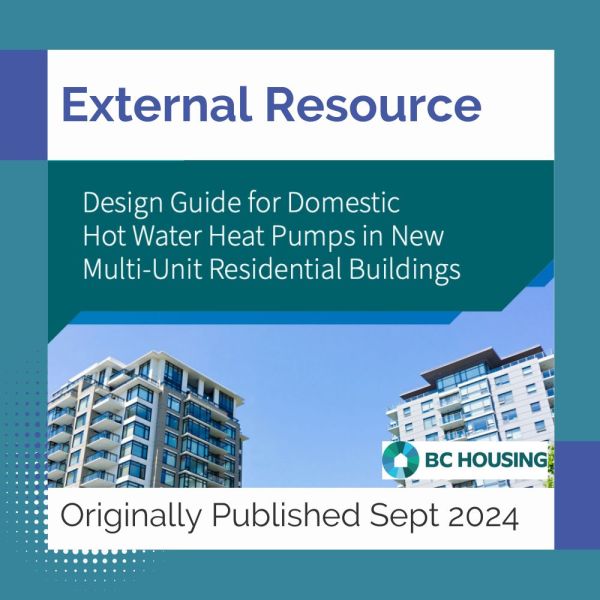
With the introduction of the BC Energy Step Code and Zero Carbon Step Code ZCSC, the adoption of energy-efficient and low-carbon buildings in B.C. has shifted the state of the market. Domestic hot water (DHW) energy consumption is now a primary energy use in new multi-unit residential buildings (MURBs). At a provincial scale, DHW systems currently represent 40-45 percent of total residential emissions, equivalent to 2 million tCO2 /year. As such, transitioning DHW systems to low-carbon alternatives will be key to meeting both local and provincial emissions reduction targets going forward.
Produced by BC Housing, the Design Guide for Domestic Hot Water Heat Pumps in New Multi-Unit Residential Buildings was prepared based on research conducted by Introba in collaboration with BC Hydro. This guide aims to address the major knowledge gaps in the industry. It will support engineers, design teams and contractors in the design and installation of DHW heat pump systems in new MURBs and support the decarbonization of these systems.
The guide contains:
- practical information about DHW heat pump systems;
- important design considerations; and,
- best approaches and practices to consider when using DHW heat pump systems.
The authors of this guide presented a webinar on this topic at a recent BUILDEX Connects event. View the recording on-demand here.
 b2e@zeic.ca
b2e@zeic.ca


